#rené fonck
Explore tagged Tumblr posts
Text
If pilots had social media part 2 :)





#ww1 pilots#aviation#great war#ww1#karl emil schäfer#manfred von richthofen#rudolf berthold#kurt wintgens#rené fonck#marcel haegelen#walter höhndorf#ernst freiherr von althaus#kurt wolff#shitpost
36 notes
·
View notes
Text
People who should shut up (based on my personal opinion):
-ppl who give Göring WAY too much credit for ww1 (ok wehraboo)
-anti-Kaiserboo types who hate MvR and praise Mannock
-people who say MvR was a serial killer
-“UHM AKTUALLY 🤓 Werner Voss was better than the Red Baron” (youre so unique and quirky)
-People who say pilots were like the knights of the sky (grandpa you forgot to take your pills)
-“were sportsmen not butches” (how about you read a book for a change)
-“UHM AKTUALLY 🤓 René Fonck had 125 victories” (its CONFIRMED victories not “it was revealed to me in a dream” victories)
-Udet stans (please go to therapy (affectionately))
-Mannock stans (please go to therapy)
-“everyone always talk about the Red Baron BUT ERICH HARTMANN-“ (ok wehraboo)
-“Man and machine and nothing there-“ OH MY GOD I KNOW! THIS SONG EXISTS! SHUT UP SHUT UP SHUT UP
29 notes
·
View notes
Photo






#xx#la grande guerre#républigram#french flying aces#rené fonck#georges guynemer#charles nungesser#jean navarre#and#ferdinand foch#marshals of france#and finally#albert roche
12 notes
·
View notes
Photo

Charles Nungesser and René Fonck from the SPA65 and SPA103 Escadrilles, summer, 1918.
#WWI#WW1#World War One#L’Armée de L’Air#French Air Force#Charles Nungesser#René Fonck#French pilots#French ace#WW1 pilots#portraits
19 notes
·
View notes
Photo

French pilot René Fonck. On September 26 he shot down six German aircraft in a day, the second time he had accomplished that feat.
75 notes
·
View notes
Photo

Manfred von Richtofen, Ernst Udet (germany) William Bidshop, Edward Mannock (england) René Fonck, Georges Guymener (france)
#ww1#history#flying aces#manfred von richthofen#ernst udet#rené fonck#edward mannock#william bidshop#georges guymener#germany#england#france#old photos
6 notes
·
View notes
Video
C1720, Caudron G.IV (1915), Musee de l'Air, Le Bourget, 05-06-2022 by Gordon Riley Via Flickr: The Caudron G4 was the first twin-engine combat aircraft commissioned in military aeronautics in November 1915. It took part in day and night bombing missions beyond the Rhine. The ace René Fonck , before switching to hunting, won several victories aboard his Caudron G4 on which he installed a fixed machine gun. Until 1916, the G4 was also used to escort other slower aircraft. Used until the end of the conflict, it is found in the Italian and English armies and within the American Expeditionary Corps . Robust and easy to fly, it is very appreciated by the Italian forces who use it above the mountains because of its climbing speed. In civilian life, it was used by airmen Poulet and Benoist who made the France-Burma connection (Paris-Ragoon) from October 14 to November 30, 1919 , i.e. 11,000 km, in 150 flight hours and 24 stages.
8 notes
·
View notes
Text

Lieutenant René Fonck with a SPAD S.XVII, 1918.
60 notes
·
View notes
Photo

René Fonck (1894-1953) devant son SPAD XII
3 notes
·
View notes
Text


[#Histo] 📆 Saviez-vous que le 20 mai 1916, Charles Nungesser fût le troisième pilote français à recevoir officiellement le titre d’As ?
Le titre d'As est une reconnaissance militaire conférée après 5 victoires homologuées.
Charles Nungesser est né le 15 mars 1892 à Paris. Il rejoint l’armée chez les hussards en 1914.
Après avoir capturé une voiture allemande contenant des documents secrets, il obtient la Médaille militaire et une affectation dans l’Aviation. 🏅
Il intègre l’école d’aviation d’Avord en janvier 1915 et obtient son brevet de pilote trois mois plus tard.
D’abord affecté à l’escadrille de bombardement à Dunkerque, il rejoint en novembre 1915 l’escadrille de chasse de Nancy Malzéville, équipée de Nieuport 11.
En janvier 1916, il est blessé lorsque son avion s’écrase au sol, mais il s’envole à nouveau pour combattre l’ennemi à partir du mois d'avril de cette même année.
Alfred Heurtaux, l’As aux 21 victoires homologuées disait de Nungesser : « Il pilote comme un cochon mais il a un courage formidable. »
↪️ Charles Nungesser détiendra, à la fin du conflit, 43 victoires homologuées, ce qui lui vaudra la place de 3e As français, après René Fonck et Georges Guynemer.
© Armée de l’air
2 notes
·
View notes
Text
Jean Navarre
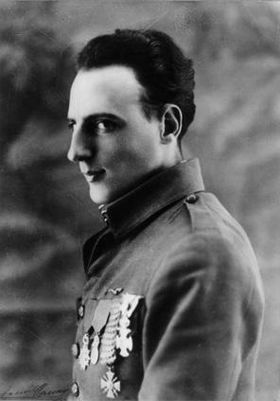
08/08/1895- Jouy-sur-Morin, 10/07/1919- Villacoublay
One of the pioneer flying aces, credited with 12 confirmed aerial victories, plus 15 unconfirmed.
Jean and his twin brother Pierre are the first of the 11 children of engineer André Navarre and his wife, musician Jeanne de Coëscon.
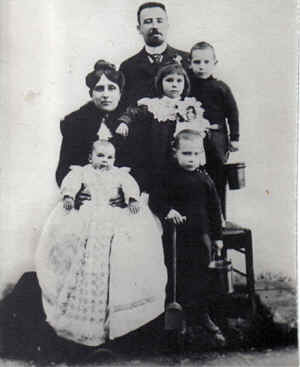
Jean is an unruly child, as well as his twin. They are frequently expelled from school. He is even sent to an English pension, which he runs away from. His father tries to have him work in his factory to calm him down, but Jean doesn't stay. The only thing he really cares about, as well as Pierre, is the nascent aviation.
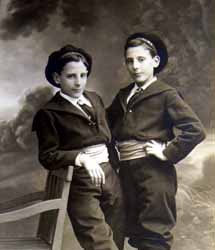
In June 1914, he enters the Ecole Aéronautique of the Caudron brothers, two months before war breaks out. He lies to get into the army (about his age, flying capacities, and having the necessary civilian diploma).
He learns. He is still notoriously undisciplined. In 1915 he joins in Muizon the first fighting squadron , the M.S.12, commanded by Lieutenant de Bernis, and gains his first victory on April 1, forcing a German plane to land behind the French lines. Named sergeant, he earns the military medal. He will score six more victories that same month, but only two are accredited (the French system of accreditation for aerial victories is the hardest among the Allies). He will be made a Knight of the Legion d'Honneur in June; after this, the squadron, now the N. 12, will mostly fight with the Nieuport XI "Bébé".
In 1916, Navarre joins the N67 and flies over the great battlefield of Verdun. He is often seen fighting german planes (even if he "forgets" to ask for permission to take off) and is nicknamed "the Sentinel of Verdun".
He gains there a well-deserved reputation, generally flying solo for lengthy hours at a spell, tracking enemy aircraft from below and behind, machine gun at the ready. Flying the Nieuport 11 aircraft he downs two German aircraft in a single day on 25 February, the first Frenchman to achieve the feat.

Navarre flying over Verdun in his plane adorned with the French colors

Navarre also famously flew with a bright red plane, before Manfred von Richtofen did.

On April 1, he is appointed second lieutenant and joins the club of the Aces (pilots with more than 5 approved victories). One of his techniques consists in attacking wheels in the air while taking advantage of the enemy's surprise to strafe him. When he is not flying, Jean Navarre loves to party, drinks more than he can and commits many escapades (including a landing on the roof of a building in 1916). He is therefore frequently, but very temporarily, under arrest or in prison. Actually, the man does not fear anyone, neither the Germans, nor his hierarchy. In May 1916, he is the first French pilot to count 10 approved victories, victories for which there are several witnesses or when the enemy plane fell back into the French lines. These will be his last fights because in June he is very seriously injured in a duel over the Ardennes, however managing to land his plane in Sainte-Menehould.
On 17 June 1916 Navarre's aircraft is shot down above the Argonne, an accident which brings with it the severe head wound that ultimately led to Navarre spending some two years in a Parisian asylum; at around this time his twin brother is similarly involved in a (fatal) air accident. Navarre's aerial tally at the time has reached 12, and he is the first Frenchman to be considered an 'ace' (reaching five victories).
He then has 12 accredited victories but in reality he obtained more than double that. A few months later, on November 15, 1916, he is very affected by his twin brother’s death, Pierre Navarre, who had followed him in the Air Force. Drinking heavily, nervously strained, he resumes his training in 1917, but does something irreparable on the night of April 10-11, 1917, while on leave in Paris, when he runs into several police officers with his automobile. He injures one of them, stops to help him, but is attacked by the other officer and escapes into the night. Arrested by the gendarmerie at his squadron, he is imprisoned and tried but military doctors declare him irresponsible for his actions, recognizing what modern psychiatrists would qualify as post-traumatic stress syndrome.
The doctors' report states "We can say that he would not have committed the fault he is currently accused of if he had not been in this clearly pathological phase which followed his injury and concussion, and which was aggravated by the moral shock caused by his brother's death”.

Jean Navarre, wounded.
In a rest home for the rest of the war, Navarre never returns to the front. Doctors will only accept that he goes training again in September 1918. War is over. Navarre doesn't want to leave the aviation and dreams of crossing the Atlantic or flying under the Arc de Triomphe. He won't have the time.
Engaged by Morane-Saulnier, he does demonstration flights for the clients, and is also known for his aerial acrobatics.
On July 10, 1919, while gliding down to earth, he hits a wall and dies on the spot. He isn’t yet 24.

His funeral happens on July 12 in the chapel of the Dominique Larrey Hospital of Versailles. He is buried in Tartas (Landes) where his family originates from, alongside his twin.
Famous for his boldness, he is credited with the first double & quadruple victory of WW1.
His behaviour wasn't accepted by all, but his way of flying was unamously admired by his peers.

“The Eagle Twins”, Pierre & Jean Navarre
Pierre, his twin, starts the War in the Infantry; he was at last transferred to aviation, but only had time to know victory once, in the battle of Verdun, before he was killed. He was known for his bravery and drive .He dies in a plane accident in November 15, 1916 - having been just transferred to the N67 with his brother. He is 21.
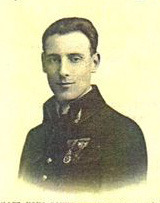
Pierre Navarre
An anecdote among many:
Stationed in Brias (Somme), on a rainy day, there was nothing to do. He decides to go for a trip to Amiens accompanied by an observer officer while he is placed in custody for having done prohibited spins in the air. They go to eat pastries and drink port. He takes off to return but before he has a meeting above the city and they throw bouquets of flowers in the main street. Seeing a young woman waving to them from her balcony, he lands again in the countryside and they go to their admirer who offers them more port. To spend the night in town Navarre calls their captain, claiming the plane to be broken down. The next day, out of camaraderie, the team of mechanics who came to repair the plane which is in perfect condition does not breathe a word about this matter.
What did his peers think of him ? Not all of them appreciated his temper or, especially, his misdemeanours, but many had praise for him.
"He had a courage that can only be compared to that of Guynemer or Nungesser and the skill of Fonck. Most ignore the fantastic work he did in Verdun. He possessed a spontaneous generosity and even a natural delicacy of feelings that only those who knew him closely could appreciate "
Captain P. de Bernis, his squadron leader.
"Navarre, who was believed to be my rival, was above all my friend, it was he who was one of the first, along with this brave Guynemer, to launch single-seater hunting. I have always had a deep admiration for him, whom I consider of very first class, both from an manoeuvers point of view and from a shooting precision point of view "
Charles Nungesser (43 wins).
"If he doesn't kill himself, he will surpass us all"
Roland Garros
"He was generous: every time he fought in the company of another he" gave him "the plane that was shot down, unless that plane fell in our lines, which was rare!"
"Jean Navarre's generosity was also manifested during the fighting. Before the hell of Verdun, he maneuvered and fired in such a way as to force the enemy plane to land. This result obtained, he landed near him, took the crew under his protection, even going so far as to invite them to his table. If there was a dead man, he ensured him a decent burial. "
René Fisch, fighter pilot for the N 23, squadron based in Vadelaincourt.

Sources:
www.navarre-jean.com
wikipedia
firstworldward.com
Navarre, Sentinelle de Verdun - Jacques Mortane
A short bio in English:
http://donhollway.com/jeannavarre/
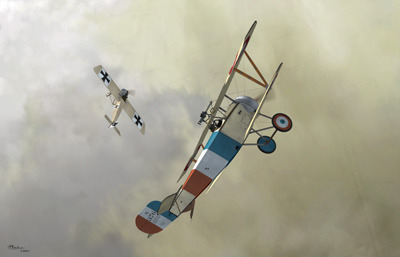

#xx#la grande guerre#french flying aces#jean navarre#today in history#happy birthday dear enfant terrible#la sentinelle de verdun
22 notes
·
View notes
Text

“Fonck was ascetic and withdrawn. Instead of drinking or socializing with the other pilots, he planned his flying missions and tactics, ironed his uniforms, and stayed physically fit through calisthenics. He seemed to overcompensate for his shyness by constantly mentioning his exploits. As a result, he seemed distant, arrogant, even abrasive. His comrades respected his skills, but even one of his closest friends, Marcel Haegelen, had thought him to be a braggart and a shameless self-promoter.”
Pictured: French Ace René Fonck and another French Ace named Maurice Boyau, seated together in a Colombes field.
@tangerinetailwinds who showed me this excerpt.
#WWI#WWI aces#French aces#René Fonck#L’Armée de L’Air#WW1#aviation history#French history#THANK YOU for showing me this omg#WW1 pilots#lads
45 notes
·
View notes
Photo

“Hélène was very easy-going, a real darling. It was not always possible to feed her frogs, rats, or snakes, but she would happily accept fresh fish and canned sardines. She was just happy... Only dogs could get on her nerves!”
Photo: June 15 1918, The Ace pilot Lieutenant René Fonck and his pet cigogne, Hélène, in the train. Hélène was the mascot of the Cigognes squadron — “The Storks squadrons”. ECPAD, France -- Text: Hélène (In French)
38 notes
·
View notes
Text

“A car that never cease to amaze the public either by its technology or his look”
It’s no man’s secret! You may kind of want to have this car, or at least take a little drive onto a test track .
No worries , this car has every advantages to make you buy this car even if you’re not finding this attractive. Let’s step into the performances :
For this this little comet , you have a gorgeous sounding V4 that sounds V8 at times that made a good 168 horsepower for a ratio of 360 NM of torque and in addition to that it top out at 230 KP/H. 4 speed manual transmission in N pattern for ease of gear shiftings and buying time on the track, 4 independent suspensions that has been think to handle like plane around the corners and with the help of the racing tire Convea . Useless to say that the winner of the compacts series is by no hesitation this bird .

By his inspiration from the name of the famous french aviator René Fonck , the main objective of this project was to implementing a feel-like plane behavior into a car . And it was a success. The car has been tested by professionals plane pilots and the reviews are pretty positive. They are agree to say that this is the closest you can get to a plane without having to fly! The stripes has been inspired from his personal drawing on his aircraft ;The Flying Stork was his personal drawing, the leaf was his squadron’s logo he was in.
For a fair amount of price here at Grand-Fractura , our goal is to make rich cars for an affordable price that even the maid of the house can buy herself a limo . So feel free to negotiate the price if it’s not in your possession.


No , this was an hoax from the beginning till here. I was trying to simulate a vintage advert from the 70’s . I am not a full mechanic fan but I was trying to be accurate as possible (even searching the real life counterpart performance of the car to just double it which is in here a AMC Gremlin) and I don’t think I did a good job to the performance but the only real thing out of it was the French aviator part. There is indeed a real WW1 pilot named René Fonck that existed . You can google his name you will find it , and how did you find the editing of the video . Surely not the greatest but at least it got cuts and music synchro. The part where it’s at dusk was done intentionally by pure nostalgia . It took me back to three years ago when my sister gave to me her used phone and I learnt how to editing videos while I started making paper cars and I made a an earlier model of the Lexact .I’ve made a similar video with an earlier model of the Lexact with the same song (but this was a Karaoke version) but this is actually a pure instrumental .Just to say this was a nostalgic experience to edit this video.
Keeping good habits. The music is obviously not mine (I will eventually tell what music is mine but that will never happen and I don’t know how to properly make music) and just a cowboy experience with this music. I do not own the rights on this song. All rights belong to the owner(s) of the song.
Music used : Tito & Tarantula - After Dark (Instrumental) from the Quentin Tarantino movie From Dusk till Dawn (1996)
No “real” maid was assaulted during the making of this fake advertisement. I respect your job just like everybody respect everyone’s job . So I don’t have anything against you and you’re doing great . Force to all the maids.
0 notes
Text

049 – PRIMERA GUERRA MUNDIAL – Fichas (690-701)
690 – René Paul Fonck, nació en Saulcy-sur-Meurthe, Francia el 27 de marzo de 1894 y falleció el 18 de junio de 1953, fue un piloto de caza francés, que acabó la Primera Guerra Mundial como el piloto con más derribos de la Triple Entente.
691 – Sus 75 victorias lo colocan segundo en la clasificación de mejores combatientes de la guerra, tan solo superado por Manfred von Richthofen ("El barón rojo"), que derribó a 80 aparatos (aunque Fonck sostenía haber abatido más de 100 aviones alemanes, el sistema francés de acreditación de derribos era el más estricto).
692 – Fonck nació en la pequeña localidad de Saulcy-sur-Meurthe en la región francesa de los Vosgos. Aunque estaba interesado en la aviación desde la juventud, él se negó a alistarse en el servicio aéreo en 1914 y escogió el servicio en las trincheras como ingeniero de combate.
693 – Poco después, cambió de opinión, se alistó como piloto de entrenamientos en mayo de 1915, siendo destinado a la escuadrilla de reconocimiento C.47, equipada con bimotores Caudron G.4. En dicha unidad consiguió dos derribos confirmados de aviones alemanes.
694 – El 15 de abril de 1917 fue transferido a la escuadrilla de caza SPA.103, equipada con el SPAD S.VII y perteneciente al famoso grupo de caza de "Las Cigüeñas" ("Les Cigognes").
695 – La escuadrilla a mediados de 1917 recibió los primeros ejemplares del SPAD S.XIII, versión mejorada del S.VII. Fonck empezó a ser conocido.
696 – Ya a finales 1917 se le reconocen 19 derribos, hecho que provocó que Fonck recibiera la Legión de honor.
697 – En 1918, llega la época dorada de Fonck como as de la aviación. Conocido entre sus compañeros por su técnica de ahorro de munición, consiguió 56 victorias en 1918 y, en dos ocasiones, se le reconocieron el derribo de seis enemigos en un solo día. En julio, Fonck superó la cifra del mítico Georges Guynemer con 53 victorias confirmadas, aunque Guymener realmente fuera sinómimo de héroe nacional.
698 – Respecto a eso, Fonck se mostró realmente molesto de que Guynemer fuese más famoso que él. Y es que, aunque sus superiores reconocían el mérito de Fonck, siempre le consideraron como un fanfarrón que se auto publicitaba constantemente.
699 – Una vez acabada la guerra, Fonck persuadió a Igor Sikorsky para que diseñara el S-35 para optar al premio de Raymond Orteig al primer aviador que fuese capaz de viajar de Nueva York a París. Pero el 21 de septiembre de 1926, Fonck se estrelló en un vuelo rutinario y fue Charles Lindbergh el que se llevaría el premio.
700 – Después de esa decepción, Fonck volvió a la aviación militar para ser inspector de las fuerzas francesas antes de la Segunda Guerra Mundial.
701 – Pero su amistad con Hermann Göring antes de la guerra, supuso una mancha en la reputación de Fonck, lo que provocó que permaneciera en París, donde murió a los 59 años. Fonck escribió sus memorias bajo el título de Mes Combats.
0 notes
